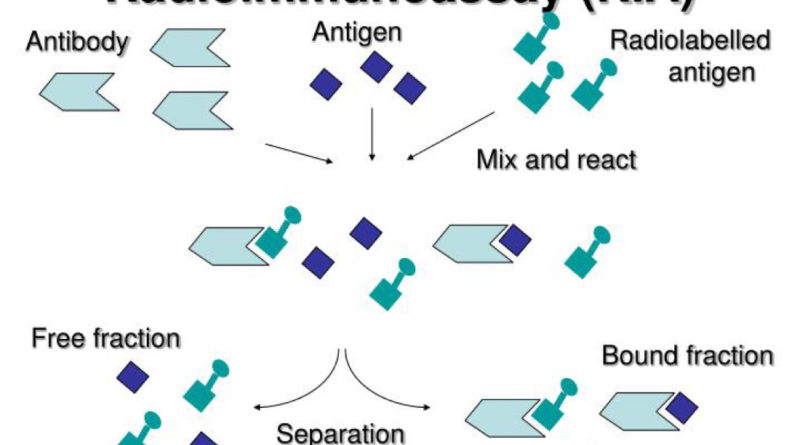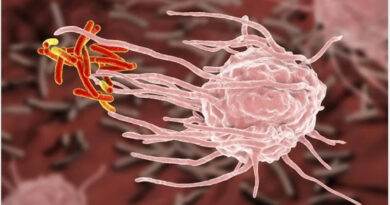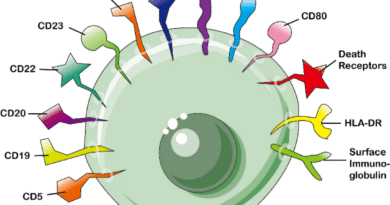Radioimmunoassay (RIA) 
Besides fluorescent dyes, many other distinctive ‘labels’ also can be conjugated to antigen and antibodies. The most commonly used labels are radioisotopes and enzymes. A variety of tests have been devised for the measurement of antigens and antibodies using such labelled reactants. The term binder-ligand-assay has been used for these reactions.
The substance (antigen) whose concentration is to be determined is termed the analyze or ligand. The binding protein (ordinarily, the antibody) which binds to the ligand is called the binder.
The first reaction of this type was radioimmunoassay (RIA) described by Bergson and Yellow in 1959.
RIA permits the measurement of analyses up to picogram (10^-12 g) quantities.
RIA is a competitive binding assay in which fixed amounts of antibody and radiolabelled antigen react in the presence of unlabeled antigen. The labelled and unlabeled antigens compete for the limited binding sites on the antibody. This competition is determined by the level of the unlabeled (test) antigen present in the reacting system.
After the reaction, the antigen is separated into ‘free’ and ‘bound’ fractions and their radioactive counts measured. The concentration of the test antigen can be calculated from the ratio of the bound and total antigen labels, using a standard dose response curve.
Reference: Text Book Of Microbiology



